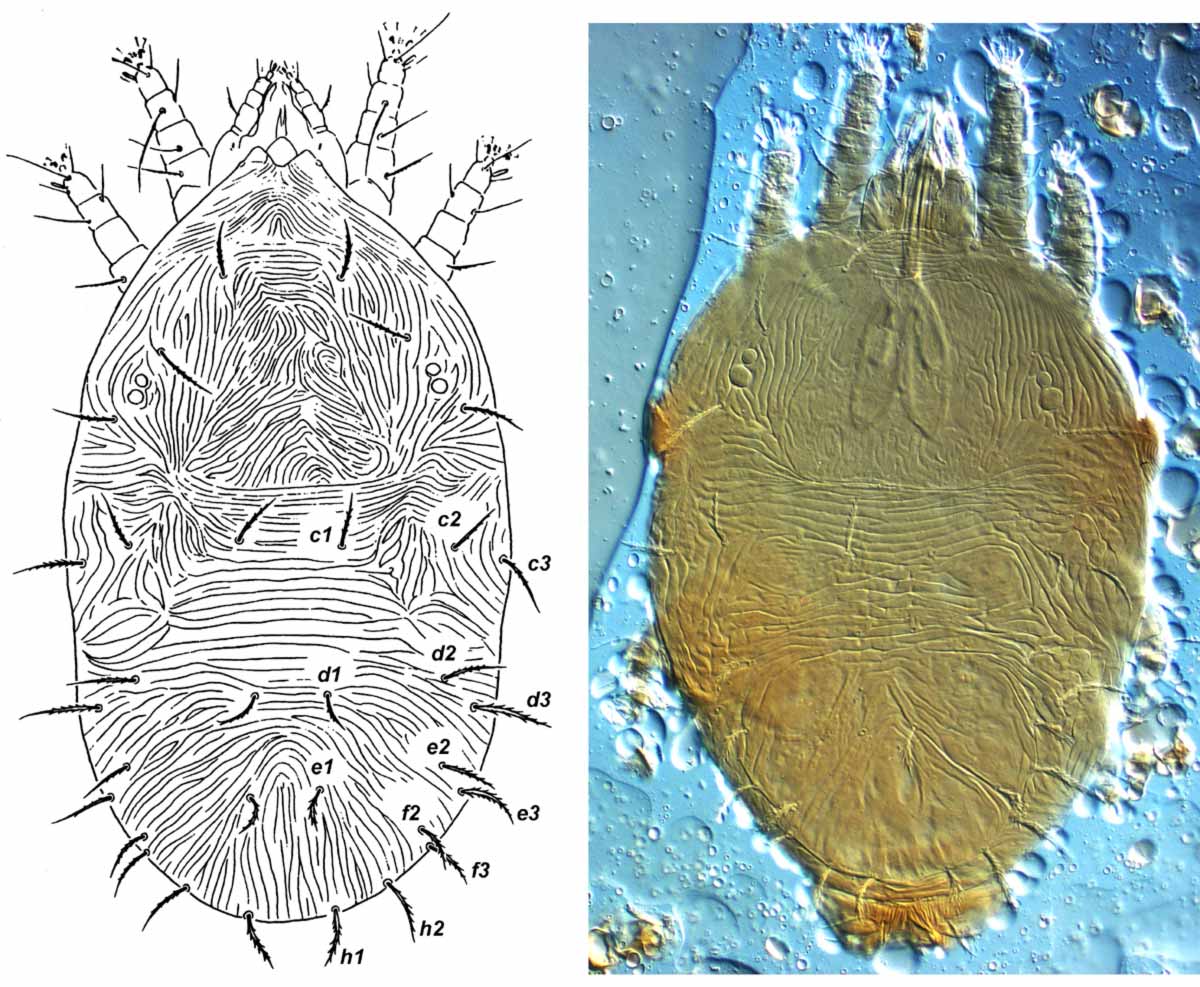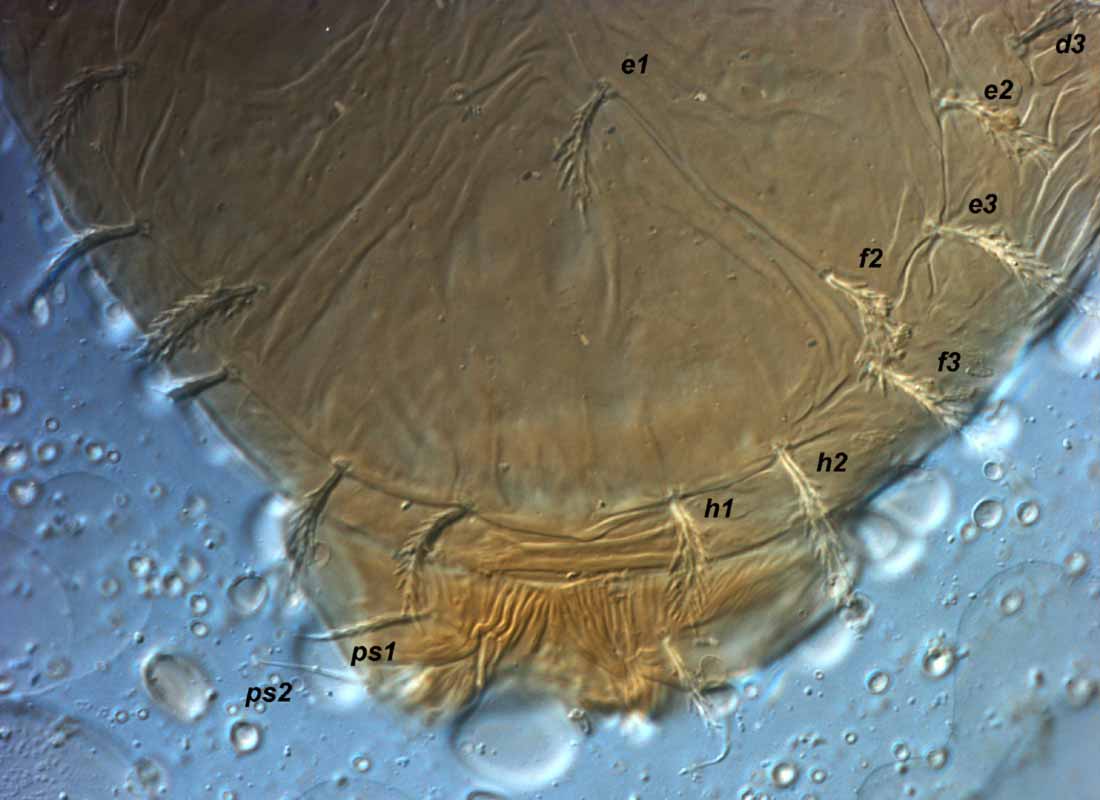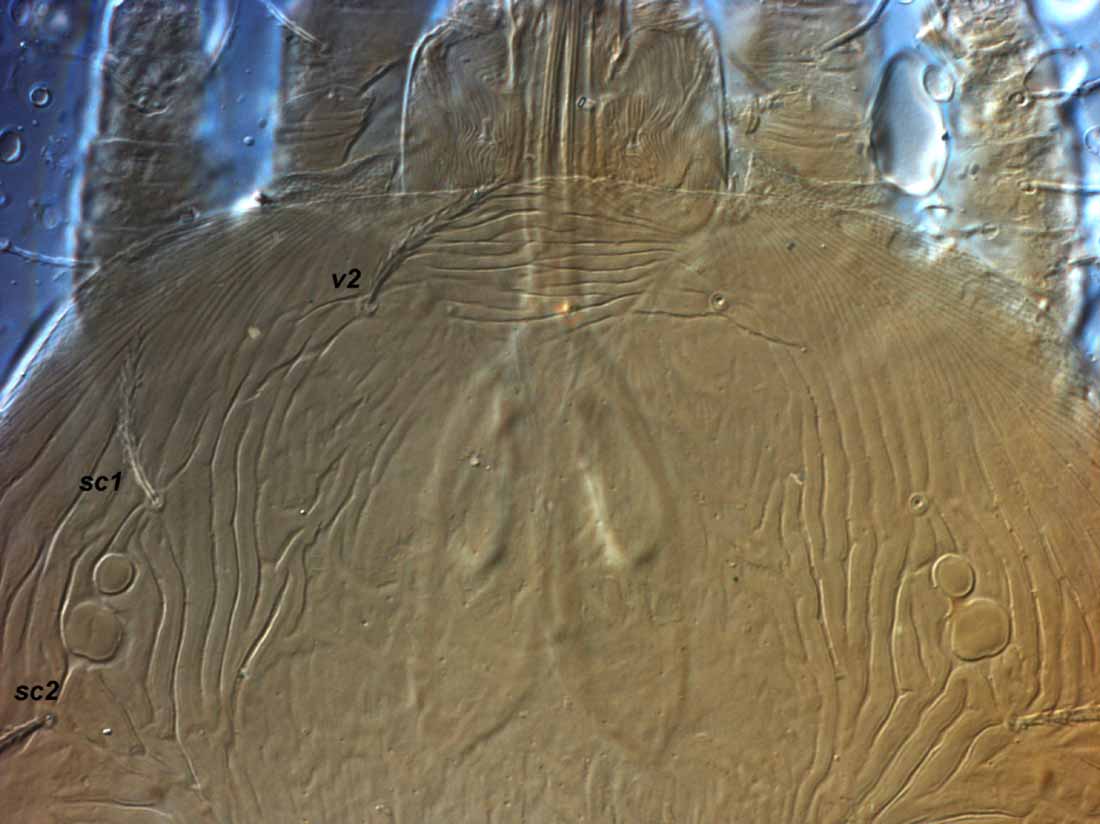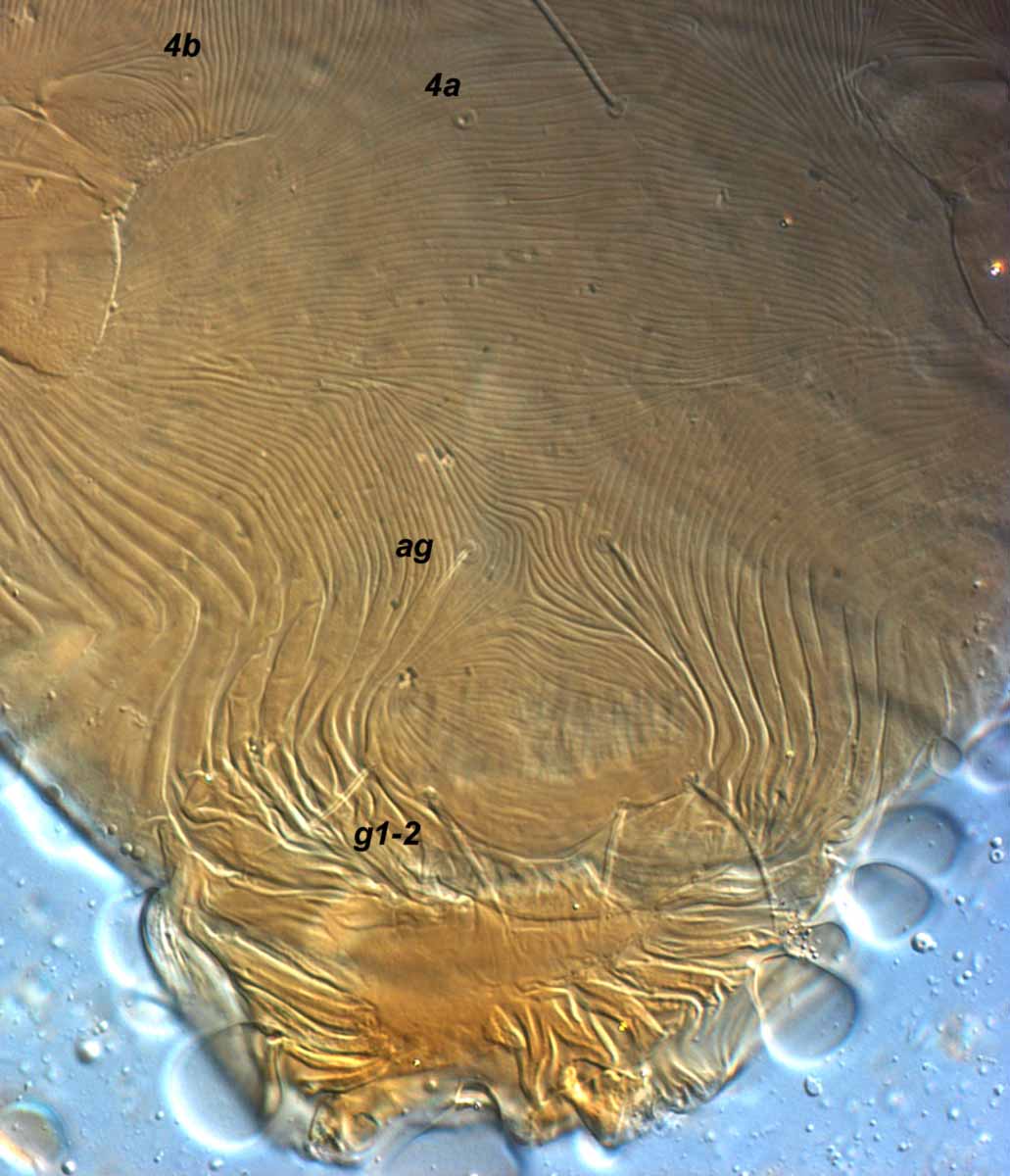Phytoptipalpus
|
Fig. 1. Phytoptipalpus conostegiae female dorsum (drawing after Baker & Tuttle 1987; type). |
|
Fig. 2. Phytoptipalpus conostegiae female posterior dorsum (type). |
|
Fig. 3. Phytoptipalpus conostegiae female prodorsum. |
|
Fig. 4. Phytoptipalpus conostegiae female posterior venter. |
Key characters
- usually a full complement of dorsal setae (Figs. 1-2) (some species were described with one dorsal seta absent (variously d3, e3, f2 or f3?); see Remarks for further comments.)
- h2 not elongate (Fig. 2)
- anterior margin of prodorsum smoothly rounded, without notch or projection (Fig. 3)
- ventral, genital and anal plates not developed (Fig. 4)
- 2 pairs ps setae
- 5 segmented palp
- adults of 3 species with 3 pairs of legs (see Remarks)
- cuticle striate
Similar taxa
Aegyptobia - 3 pairs ps setae
Number of species
over 17
Authority
Tragardh
Distribution
Most species recorded from the African (7 spp.), Neotropical (3 spp.) and Oriental (3 spp.) regions.
Countries include: China, Egypt, Mexico, South Africa, Pakistan.
Hosts
Most commonly collected from Mimosaceae; other families include: Anacardiaceae, Caesalpinaceae, Rosaceae, Solanaceae
Remarks
Phytoptipalpus alexandriae (d3?), P. kalahariensis (f3?), P. paradoxus (e3 or f3?) and P. albizzae (f2?) are recorded with one dorsal seta absent. After examining the type series for P. albizziae, it is clear that there are no missing dorsal setae. Without examining the types of each of the remaining species listed above, it is very difficult to confirm which setae are missing, and if in fact there are any setae missing at all.
Several species of Pentamerismus and Aegyptobia have been described with only 2 pairs of ps setae, and once this is confirmed these species should be placed in the genus Phytoptipalpus. For example, Pentamerismus collinus and Aegyptobia albizae, A. parcus, A. sonhanraensis. See also Seeman and Beard (2011).
Adults of three species have been recorded with only 3 pairs of legs, P. albizzae, P. paradoxae and P. muukuorum. However, this character state may not stable, as the type series for P. albizzae has a female with 4 pairs of legs, and other specimens with 3 legs on one side and 4 legs on the other.





